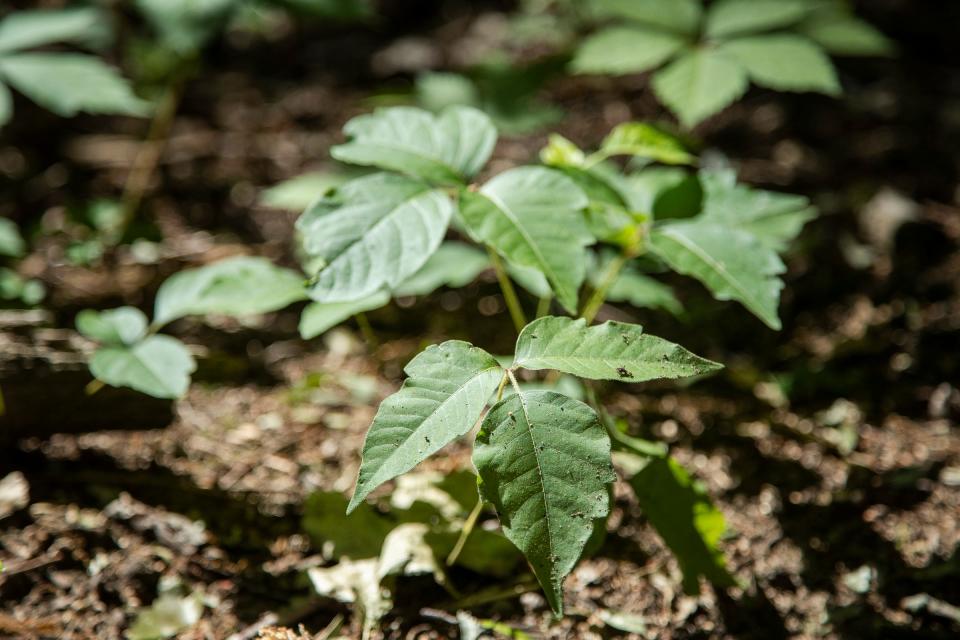6 poisonous plants in Michigan: What to know
With spring on the horizon, knowing what plants are poisonous is important.
Michigan has many poisonous plants. These plants can cause rashes or even lead a few to death.
Here is a guide on poisonous plants in Michigan:
1. Giant Hogweed
According to the Michigan State Extension website, the giant hogweed can cause severe reactions caused by the sap of the plant. Skin lesions and potentially long-term blindness are a few of the symptoms. Giant hogweed has clusters of umbrella-shaped white flowers. The plant can grow 7-14 feet tall and has stems that are green with purple splotches, according to the Michigan invasive species list.
2. Poison Hemlock
Just like giant hogweed, poison hemlock has clusters of white flowers and the stems have purple splotches, according to an article by the healthcare blog Heathline. One difference between the two is hemlock is found all over the U.S. but hogweed is specific to different regions.
Poison hemlock is a weed, and wild carrot is another Michigan weed that is often mistaken for hemlock. It's typically found in Lower Peninsula counties but has been found in the Upper Peninsula as well. The seeds, flowers, leaves and roots of the plant contain toxic alkaloids that can lead to respiratory failure .and death, according to Healthline.
The leaves on hemlock also resemble parsley, which leads to accidental poisoning.
More:Metamora-Hadley Recreation Area campground to close for upgrades
More:How winter storms affect your trees and shrubs: What to know
3. Poison Ivy

Poison ivy can be found in any Michigan county, according to the MSU Extension website. Humans have the potential to have an allergic reaction to it because of an oily resin called "urushiol." The oily resin is on its leaves, stems, and roots. Poison ivy has three leaves.
According to the Mayo Clinic, here are a few possible symptoms of a poison ivy rash:
Redness
Itching
Swelling
Blisters
Difficulty breathing
It's best to wash your skin immediately if it comes in contact with it.
4. Poison Oak
Poison oak is native to North America and typically found in eastern and central Michigan. It's similar to poison ivy and contains the same oily resin called urushiol. It's a shrub that is 3 or 4 feet tall, it contains small white flowers in the spring. The chemical found in this plant can affect your skin, eye, and respiratory system, according to the New England Carnivorous Plant Society (NECPS).
5. Poison Sumac
Poison sumac is similar to poison ivy and poison oak in terms of having the poisonous oily resin called urushiol. The same symptoms apply as well and can be noticed within eight to 48 hours after contact, according to an article by Healthline.
This plant has reddish stems and leaves that contain seven to 13 leaflets arranged in pairs with a single leaflet at the end plus additional looks as well. This plant can be found in swamps, wetlands, or hardwood forests.
6. Wild parsnip
It's a biennial flowering herb on a single stem that can grow to 5 feet, their leaflets are toothed and shaped like a mitten according to the Michigan invasive species list. These plants are native to Eurasia and are often found in open areas and fields.
Wild parsnip spreads through their seeds when carried by wind, water, or equipment. The stem, leaves, and flowers contain chemicals that increase skin sensitivity to sunlight and can cause severe blisters or rashes according to the Michigan invasive species list.
This article originally appeared on Detroit Free Press: Poison ivy, wild parsnip are just a few of Michigan's poisonous plants

